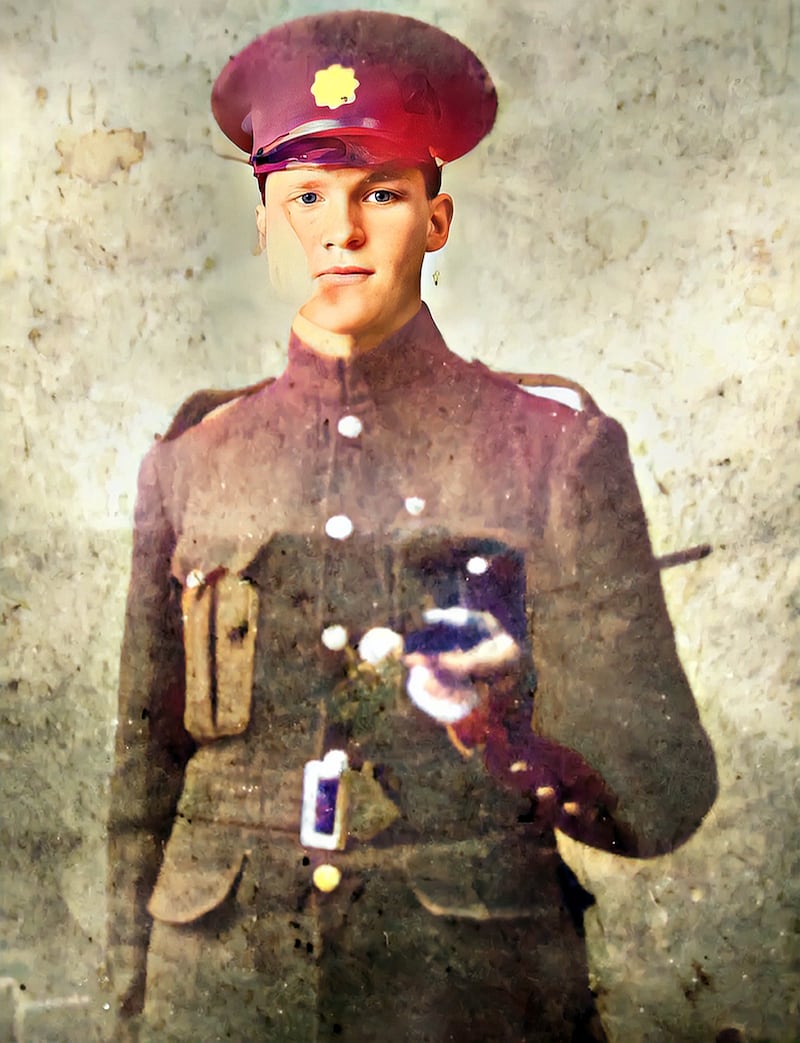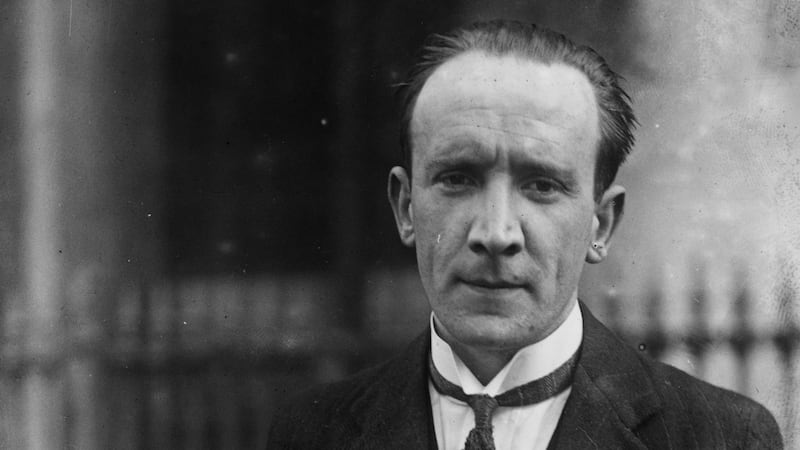It was a sensational case which generated lurid headlines and combined politics, sex, murder and revenge. The dramatic trial and execution of a National Army lieutenant a century ago this month followed two vicious killings in east Kerry in December 1923 which were deeply embedded in the divisions of the Civil War.
Lieut Jeremiah Gaffney, who was hanged in Mountjoy jail on March 13th, 1924, was a loutish, volatile and violent character, even by the standards of many of his peers in the Kerry command of the National Army during the Civil War. Gaffney also presided over the torture and killing of IRA prisoners.
The Dublin native was just 22 years old when he was appointed a lieutenant at Castleisland Army barracks at the beginning of the war. From there, he ruthlessly pursued the anti-Treaty IRA in rural east Kerry.
On December 3rd, 1923, the Garda sergeant at Scartaglin, a few miles from Castleisland, was killed by local republicans during an armed robbery of the Garda station. James Woods was the first Garda sergeant killed in the line of duty in the new police force and his killing was widely condemned, including by the then Garda commissioner Eoin O’Duffy, who attended his funeral.
RM Block
Lieut Gaffney used the opportunity of the Woods killing to do what he enjoyed best: targeting and terrifying local republicans. Hours after Woods was shot on the stairs of the Garda station, Gaffney and his men raided the nearby home of the O’Connor family, who were republicans. The women of the house were beaten and abused and a young servant boy, Con Horan, was shot in the back but survived the attack.

Two days later, Gaffney and his men indulged in another of their favourite pastimes: drinking. After a day of heavy drinking in Scartaglin on December 6th, 1923, Gaffney sent his men to apprehend a 19-year-old local, Thomas Brosnan, the only son of a blacksmith and publican. Brosnan, who carried dispatches for the IRA, had no known involvement in the death of Sgt Woods.
Gaffney instructed one of his soldiers, Pte Denis Leen, to fetch Brosnan from his home. On the roadside, a short distance from Scartaglin, Leen fired at Brosnan before Gaffney “finished him off” and fired the fatal shots. Gaffney warned his soldiers not to breathe a word of what had occurred.
If Brosnan had no obvious connection to the killing of Sgt Woods, why was he singled out so ruthlessly by the lieutenant? It turned out Gaffney’s motives were personal as well as political. As would emerge during his trial, Gaffney had been in a romantic relationship with a local nurse, Ellen Keane, whose husband had recently left her and gone to the United States. Keane moved in with Gaffney, and she became known locally by a disapproving community as “Mrs Gaffney”.
As reported in The Irish Times, “the whole country protested against” Keane’s entanglement with the young soldier, including the Brosnan family of Scartaglin, to whom Ellen Keane was related through marriage. There was bad blood between Keane and the Brosnans and allegations of attempted poisoning. Keane, in revenge, alleged to Gaffney that Thomas Brosnan was involved in the killing of Sgt Woods.
Gaffney plotted a retribution which would not only teach a lesson to those who disapproved of his affair with a married woman but would also terrify local republicans by singling out a young IRA messenger for punishment. In summarily executing the young civilian, Gaffney was no doubt convinced that, like so many such killings in Kerry at the time, it would be covered up and he would evade justice.
He was very much mistaken. Gaffney, along with Pte Leen, was arrested and charged with the murder of Thomas Brosnan. In a typically audacious move, Gaffney escaped custody in Tralee, went drinking in the town wearing civilian clothes, and made his way back to his native Dublin. He was eventually apprehended at North Richmond Cottages by, among others, Maj Gen Paddy O’Daly, the controversial former head of the Kerry Command.
Commissioner Eoin O’Duffy was furious about the reputational damage of Gaffney’s escape from custody, telling the Department of Home Affairs that “the escape of a prisoner detained for the most serious crime known to the law, is almost unbelievable”.
The government discussed the Gaffney case on March 10th, 1924. An Army mutiny was under way, adding a new urgency to the need for discipline in the ranks. The Minister for Home Affairs, Kevin O’Higgins, who had been horrified by the attitude of his peers towards the extrajudicial killings of the O’Daly regime in Kerry, was very keen that the lieutenant should face the full rigours of the law.

Gaffney and Leen were tried at the Dublin City Commission before Mr Justice Johnathan Pim in January 1924. Both entered pleas of not guilty. William Carrigan SC, prosecuting, claimed that Thomas Brosnan “was foully butchered in a manner so treacherous, so revolting, that it would be a disgrace and terror to a tribe of savages”.
Gaffney’s defence counsel outlined that when he was 14 years old, he had fractured his skull, part of which was removed. His surgeon testified that he became “mentally incapable of dealing with any problems that came up before him” and that the consumption of alcohol had a serious effect on Gaffney’s behaviour.
The jury was not impressed. Gaffney was found guilty of murder and was sentenced to death. At 8am on March 13th, 1924, he was hanged at Mountjoy jail by the British hangman, Thomas Pierrepoint. Leen was also found guilty but was spared hanging when Gaffney accepted full responsibility for the murder.
The attitude of the National Army and the Free State Government to the notorious behaviour of many senior Army figures in Kerry during the Civil War left a bitter taste in the county. So, the execution of a lieutenant for the cold-blooded murder of a civilian represented a big shift in the approach to Army outrages in Kerry and stood in very stark contrast to the cover-ups at Ballyseedy and elsewhere during the Civil War.
The family of Thomas Brosnan was denied any compensation for his murder: the authorities concluded that there was insufficient evidence to prove his active service with the IRA, an essential eligibility requirement. Perhaps the execution of his murderer offered a compensation of sorts: it was, after all, a form of justice to which countless other victims of the National Army in Kerry had been so cruelly denied.
Owen O’Shea is a historian and author of several books including No Middle Path: The Civil War in Kerry (Merrion Press, 2022)
- Listen to our Inside Politics Podcast for the latest analysis and chat
- Sign up for push alerts and have the best news, analysis and comment delivered directly to your phone
- Find The Irish Times on WhatsApp and stay up to date
















